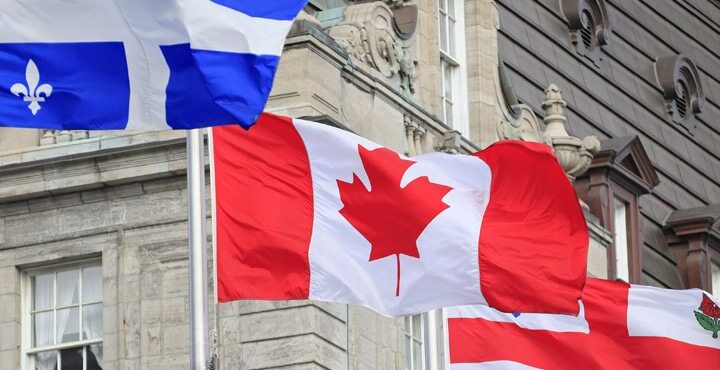Tax Obligations After Closing Your Business
TurboTax Canada
December 4, 2019 | 4 Min Read

When closing a business, there are many steps which must and should be taken, and taking care of any tax obligations is right at the top of the list in order to prevent and issues from occurring in the future.
The Canada Revenue Agency (CRA) has very specific guidelines regarding closed businesses so it’s important to keep those rules and regulations in site on the off chance that they may be needed.
Closing your business
If you are planning to close your business – or if your business is forced to shut down due to external factors, there are a few things you should consider, such as notifying the CRA, filing a final tax return, paying any outstanding tax amounts, and financing your succession planning.
Legal and financial obligations
Closing accounts
Here is a list of things you should do if you are planning to close a business:
- File all of your outstanding returns and make sure they are up to date
- Resolve any balances outstanding
- Cancel your business registration for your sole proprietorship or partnership OR
- Voluntarily dissolve your corporation*
- If you dissolved a corporate entity, ensure that the final return is filed with the end date being the date it ceased to operate
- Close your RST/PST/QST accounts with the appropriate provincial agency
- Close your payroll accounts with the CRA
- Close the GST/HST account with the CRA – again making sure that the final GST/HST return has the end date reflecting the entity’s last day
For more information on closing accounts, visit these CRA links: Closing accounts and Closing a GST/HST account
*Dissolving your Corporation
This section is beyond important if your business is incorporated!
Dissolving your corporation is the legal act of ending its existence. Regardless of the jurisdiction in which your business is incorporated, when the time comes to dissolve your corporation there are several factors to consider. In the same way you undertake certain formal procedures to create a corporation, you must file forms with the appropriate governments to dissolve it.
Before filing articles of dissolution, you may need to:
- Confirm that you have the authority to dissolve the business
- File all applicable tax forms
- Ensure the corporation is in good standing
- Distribute remaining assets, property or liabilities
Other conditions may apply. Follow the guidelines set by your corporation’s registrar if you are planning to dissolve the business: Corporations Canada: Dissolving a corporation
CRA Accounts
At the time of closing your business, file the form “RC145 Request to Close Business Number (BN) Program Accounts” with the CRA. This form allows you to complete the three operations required when closing a business:
- Close payroll accounts
- Forwarding the GST/HST, and
- Filing appropriate sole proprietorship, partnership or corporate notices of dissolution
If your business is registered in Ontario, for example, you can give notice of closing with the CRA, the Ministry of Government Services, the Ontario Ministry of Revenue and the Workplace Safety and Insurance Board with a single notification through the Service Ontario Change of Business Information Service.
Payroll Accounts
Within seven days of closing your business, you must remit all outstanding payroll deductions from your employees’ wages to the CRA, along with all outstanding pension contributions (CPP/QPP) and employment insurance (EI) premiums.
You have 30 days to complete and file any outstanding T4 or T4A slips and summaries of pension, retirement, annuity or other income due to your employees or others related to your business.
Sheryne Mecklai, CPA, CA, a senior tax manager at Manning Elliott LLP, notes that “if any taxes remain unpaid after a corporate business closes, these (could) become the responsibility of the directors.” She also points out that if after the close of business, former employees believe their withholding taxes were not remitted, they can “report the employer by calling the CRA’s Informant Leads Program at 1-866-809-6841. As well, they can contact the CRA individual enquiries line and have the agent make a note on their file that all required source deductions were taken, but that the employer has failed to remit them.”
GST/HST Closing Payments
If you are registered for GST/HST, your business collects the GST/HST taxes, holds them in trust and periodically forwards these payments to the CRA. If your annual revenue is less than $1.5 million, you remit funds annually. From $1.5 to $6 million you pay quarterly, and above $6 million you pay monthly.
In all cases, you must account for and pay any outstanding GST/HST amounts to the CRA immediately after closing your business. When doing so, you must make two separate calculations, one for the amounts owing on non-capital property and another for the amounts owing on capital property. Capital property generally includes most investments, including land and buildings. Non-capital property includes all other kinds of commercial goods and property. In some instances, there is an investment tax credit recapture due when the business closes. GST/HST provisions and ITC recapture requirements are discussed in greater detail on the CRA page “Close my GST/HST account“. Note that in provinces with a GST, there may also be provincial or retail sales taxes taxes due.
Notices of Dissolution and Final Tax Returns
Every registered Canadian business must file a dissolution notice at the time of closing. Sole proprietorships and partnerships file a “Dissolution or Change of Proprietorship (or Partnership)” form with the provincial Corporate Registry office. Corporations file an “Application for (Voluntary) Dissolution” with the provincial Corporate Registry office, and must also file a final corporate tax return along with a copy of the corporate articles of dissolution with the CRA.
If a corporation fails to complete these filings, the CRA will require corporate filings in one or more subsequent tax years, even though there is no income to declare. As well, any future CRA tax debt may be added to the corporation and if not dealt with, could result in the CRA raising Director’s Liability against the directors, or the raising of a s.160 / s.325 non-arm’s length assessment to re-capture any dividends paid out while money was owing to the CRA.
References: Sheryne Mecklai, CPA, CA; Manning Elliott LLP; Vancouver, B.C.
Related articles

© 1997-2024 Intuit, Inc. All rights reserved. Intuit, QuickBooks, QB, TurboTax, Profile, and Mint are registered trademarks of Intuit Inc. Terms and conditions, features, support, pricing, and service options subject to change without notice.
Copyright © Intuit Canada ULC, 2024. All rights reserved.
The views expressed on this site are intended to provide generalized financial information designed to educate a broad segment of the public; it does not give personalized tax, investment, legal, or other business and professional advice. Before taking any action, you should always seek the assistance of a professional who knows your particular situation for advice on taxes, your investments, the law, or any other business and professional matters that affect you and/or your business.








